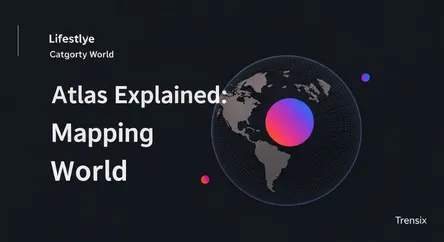Lifestyle
Atlas Explained: Mapping Your World

Explore the atlas, the timeless collection of maps. Learn why this classic travel tool remains relevant for adventurers in the digital age.
What is an Atlas?
An atlas is a book or a bound collection of maps. Named after the mythological Greek Titan, Atlas, who was condemned to hold up the celestial heavens, these volumes are fundamental tools for geography and navigation. They can contain various types of maps, including political, physical, and thematic charts, showing everything from country borders and topography to climate patterns and road networks. For centuries, an atlas has been the primary resource for visualizing and understanding the world on a broad scale.
Why is it Trending?
In an era dominated by digital GPS and online mapping services, the physical atlas is experiencing a resurgence. This trend is driven by a desire for a "digital detox" and an appreciation for tangible, analog experiences. Travelers are rediscovering the joy of planning trips by hand, fostering a more intentional and mindful approach to their journey. Additionally, beautifully crafted and vintage atlases have become popular decorative items, valued for their cartographic artistry and historical significance.
How Does it Affect People?
An atlas fundamentally changes how people interact with geography. Unlike point-to-point GPS, it encourages a broader spatial awareness, helping users understand the context and scale of a region. For travelers, this leads to a greater sense of adventure and discovery, revealing potential detours and points of interest that algorithms might miss. It provides a tangible connection to the journey, transforming travel from a simple act of getting from A to B into a more immersive exploration.